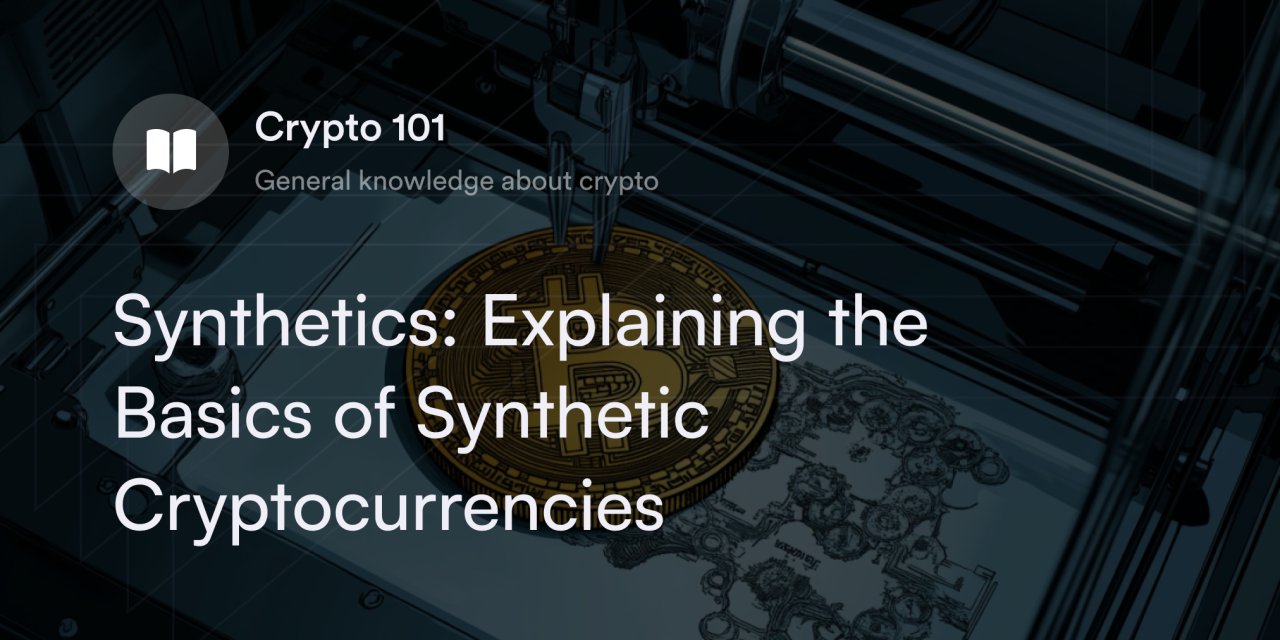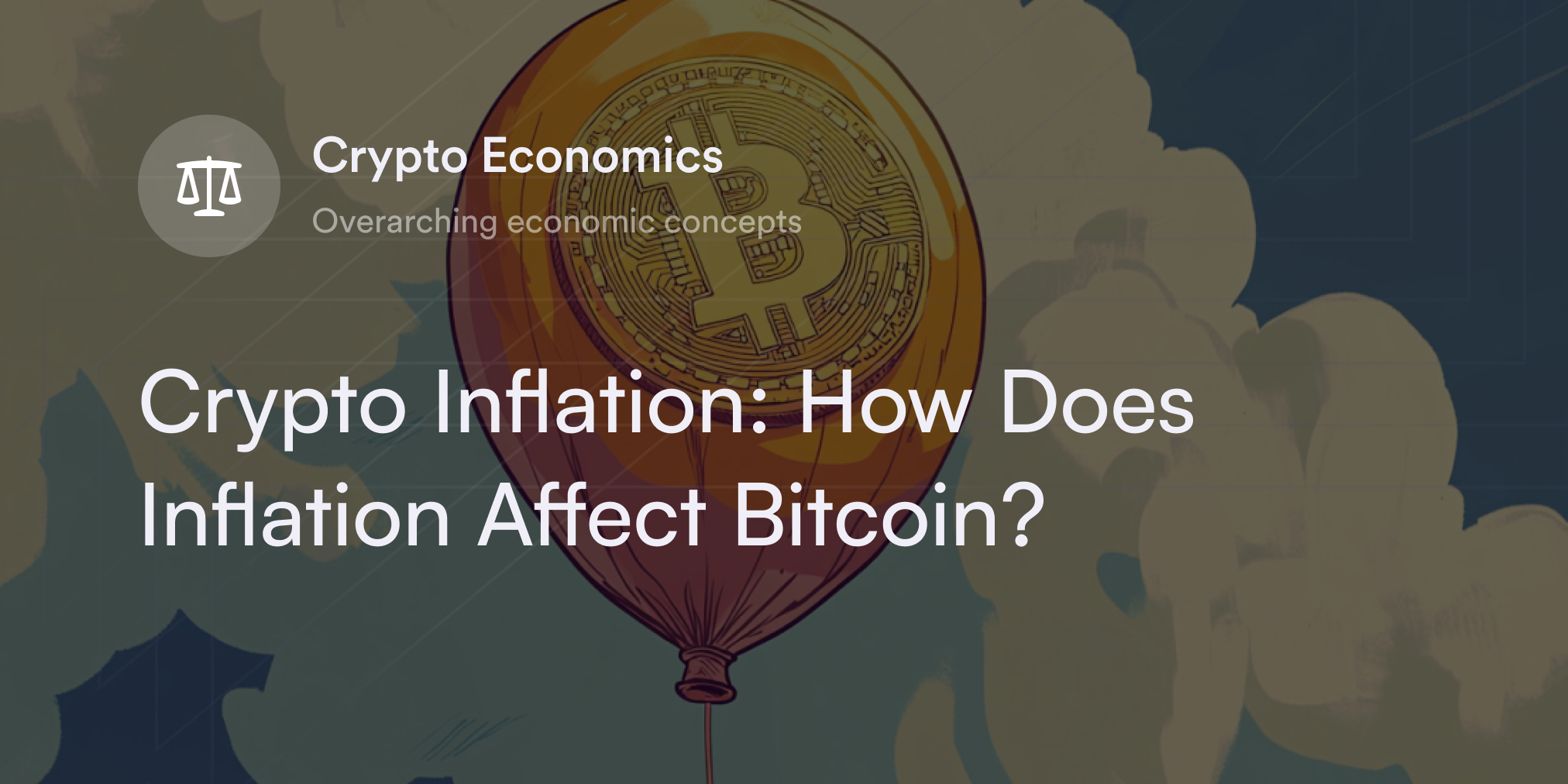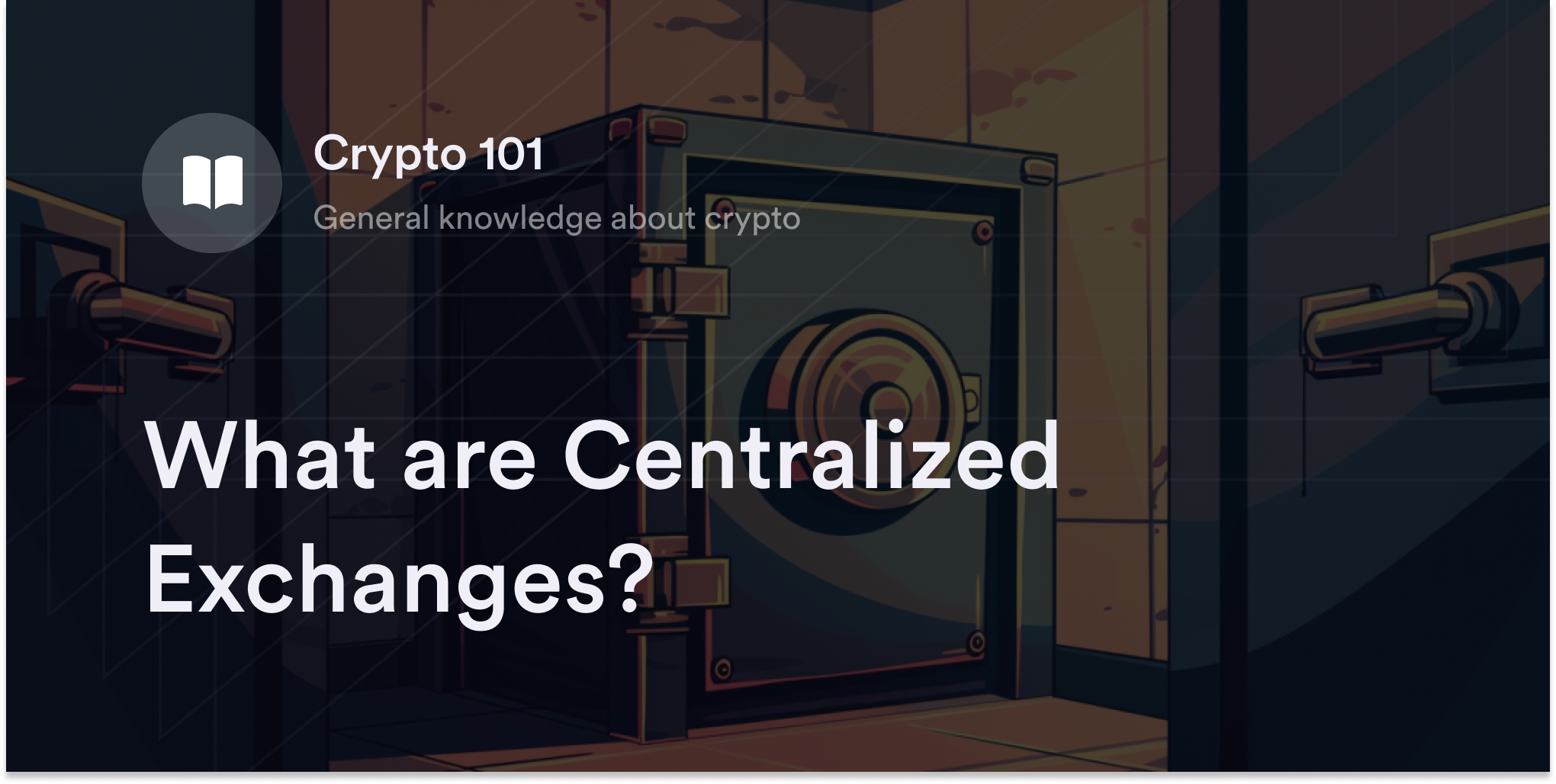


Tokenization—or the process of creating virtual assets on decentralized blockchains—is one of the most talked-about technologies in cryptocurrency circles. As crypto adoption expands, some multinational banks and financial analysts argue that tokenized assets may become one of the most significant segments of the digital economy. Blockchain analytics firms already value the tokenized market at $3 billion, and some projections suggest it’s set to reach a $16 trillion market cap in less than a decade.
One of the keys to understanding the financial world’s fascination with tokenization is an asset category called synthetic tokens. Let’s explore crypto synthetics, their function, and their benefits.
What are crypto synthetic assets?
Crypto synthetic assets (aka synths) refer to a class of blockchain-based digital currencies that simulate the value of other asset categories. Similar to crypto derivatives like futures contracts and perpetuals, synthetic tokens mimic the price of another financial product—such as a stock, commodity, or cryptocurrency—without granting holders ownership rights over the underlying asset. Instead, synth digital tokens mirror market price fluctuations for whatever item they’re connected to, giving crypto traders access to a limitless array of digitized financial instruments.
Unlike derivatives, however, crypto synthetics always exist as digital tokens on decentralized blockchains like Ethereum (ETH) and have a broader range of use cases outside trading. For example, synthetic cryptocurrencies called wrapped tokens make it possible to use digital assets like Bitcoin (BTC) in decentralized applications (dApps) outside the Bitcoin ecosystem, which helps crypto users seamlessly transfer value throughout Web3.
Some synthetic assets like stablecoins and liquid staking tokens also open new passive income opportunities in decentralized finance (DeFi), including yield farming, staking rewards, and liquidity mining.
How do synthetic crypto assets work?
Synthetic crypto assets go through tokenization, meaning they’re issued (or minted) as cryptocurrencies on top of blockchain networks. Think of crypto tokens as add-on features that rely on the security of pre-existing blockchains like Ethereum or Cosmos (ATOM).
Developers use automated smart contracts to mint synths on their chosen blockchain. These smart contracts use if/then statements to recognize state changes on blockchains and instantly perform actions when specific conditions are met, automating the issuance, distribution, and transfer of these digitized tokens.
All data on a synthetic token’s max supply and transactions are publicly viewable on the underlying blockchain’s distributed payment ledger, and tokens use their blockchain’s consensus algorithm to verify transfers and pay applicable network fees (aka gas fees).
Although all synths go through a similar tokenization procedure, issuers use different techniques to back up their assets’ value. Sometimes, developers turn to centralized solutions to secure their synthetics, while others rely on decentralized technologies.
For example, some stablecoin issuers like USDC’s Circle keep a centralized reserve of equivalent fiat currency and cash-equivalent paper assets to match the USD value of every stablecoin in circulation. BitGo uses a similar centralized system for its synthetic Wrapped Bitcoin (wBTC) product, where traders deposit BTC into BitGo’s vault as collateral to mint wBTC tokens on Ethereum. In contrast, Ethereum-based protocol MakerDAO uses a decentralized model to back its USD stablecoin DAI. To ensure the value of every DAI stablecoin MakerDAO mints, traders have to deposit more crypto than the DAI they intend to borrow, which means the protocol is always overcollateralized.
What are the benefits of synthetic cryptocurrencies?
Synthetic assets significantly expand blockchain technology’s use cases and promise to bring crypto’s core value of decentralization into countless industries. As developers continue to tinker with tokenization, there’s no limit to the innovative solutions synthetics offer traders.
Diversified portfolio: With synthetic assets, crypto traders can access various financial instruments both within and outside Web3. From synthetic bonds and commodities to stocks and real estate, there’s a wealth of asset categories to add to a digital portfolio.
Accessible to global traders: For eligible traders, trading synthetic assets is as simple as linking a crypto wallet and swapping digital funds on peer-to-peer (P2P) platforms. Plus, since digital assets are easily divisible, owning fractional synthetic shares is possible, increasing market liquidity and accessibility. The lower barrier to entry for synthetic token markets makes many asset categories available to a global audience.
Available 24/7: Since blockchains are always online, traders don’t have to wait for traditional market hours to open positions, initiate transfers, or close trades.
Transparent: As with other cryptocurrencies, the ownership details for synthetic tokens are viewable on the blockchain. Traders don’t need to trust a third party, such as a broker or bank, to secure their assets because these tokens are on an immutable payment ledger.
Risks of trading crypto synthetics
While synthetic cryptocurrencies offer many exciting possibilities, they’re one of the most experimental technologies in cryptocurrency. Before swapping synths, recognizing their potential risk factors is essential.
Counterparty risks: Just because synthetics are on blockchains doesn’t mean they don’t have centralization points. Traders need to trust counterparties to maintain their synthetic assets’ value in reserve-backed stablecoins or centrally controlled wrapped tokens.
Prone to glitches and hacks: Because synthetics are relatively new, they don’t have a long track record for security practices or coding standards. Traders should be aware of synths being highly experimental and prone to errors such as bugs, oracle connectivity issues, or smart contract code exploits.
Liquidity concerns: Although the total value locked in DeFi protocols continues to grow, traders may find it challenging to close trades at favorable prices due to low liquidity—especially for niche synth projects. Reduced market demand in DeFi may result in unfavorable closing prices and heightened slippage risk.
Examples of synthetic crypto assets
Although a wealth of assets with the potential for tokenization exists, a few categories have become significant in the crypto economy. Here are a few prominent synth examples:
Wrapped tokens
A wrapped token represents a crypto asset’s value, like Bitcoin or Ethereum, on a non-native blockchain. For example, wBTC has the same value as BTC but is compatible with dApps in the Ethereum ecosystem.
Stablecoins
Stablecoins are crypto assets with a 1:1 peg to a fiat currency. If stablecoin issuers hold cash and cash equivalents in reserves, they’re considered reserve-backed stablecoins. In contrast, decentralized stablecoins (e.g., DAI) use overcollateralization or advanced algorithmic programs to secure their value.
Liquid staking tokens
Crypto staking providers in DeFi sometimes offer liquid staking tokens, which serve as a receipt to unlock crypto collateral and as a valid payment option in DeFi applications. For example, staked Ethereum (stETH) is a liquid staking token offered to users who stake ETH on Lido Finance. Although stETH tokens aren’t authentic ETH, they have the same monetary value and are accepted throughout Web3.
Inverse cryptocurrencies
Instead of profiting as a cryptocurrency’s price rises, inverse cryptocurrencies become more valuable as the underlying asset falls in value. These synthetic tokens allow traders to hedge their long positions or bet against a digital asset without using techniques like short selling.
Synthetic commodities
Crypto traders who want price exposure to tangible items like gold, silver, and oil sometimes purchase synthetic representations of their price on exchanges like Synthetix. These tokens mirror the price of physical assets like gold but don’t grant holders ownership rights over physical gold bars.
Synthetic stocks
Blockchains might be the brokerage houses of the future as synthetic stock tokens become more widely accessible. Each synthetic share represents the price movements for shares of publicly traded companies, giving traders an alternative to traditional stock market trading.
Swap crypto derivatives on dYdX
While synthetics and derivatives are different asset categories, both offer traders flexible ways to build or hedge their crypto portfolios. Eligible traders interested in adding derivatives like perpetuals to their wallets can access dozens of positions on dYdX’s low-fee decentralized exchange. Check out the latest news on dYdX’s offerings and features on our official blog. Also, head to dYdX Academy for more guides on the latest crypto technologies and expert trading strategies, and eligible traders can start trading on dYdX today.
Disclosures
The content of this article (the “Article”) is provided for general informational purposes only. Reference to any specific strategy, technique, product, service, or entity does not constitute an endorsement or recommendation by dYdX Trading Inc., or any affiliate, agent, or representative thereof (“dYdX”). Use of strategies, techniques, products or services referenced in this Article may involve material risks, including the risk of financial losses arising from the volatility, operational loss, or nonconsensual liquidation of digital assets. The content of this Article does not constitute, and should not be considered, construed, or relied upon as, financial advice, legal advice, tax advice, investment advice, or advice of any other nature; and the content of this Article is not an offer, solicitation or call to action to make any investment, or purchase any crypto asset, of any kind. dYdX makes no representation, assurance or guarantee as to the accuracy, completeness, timeliness, suitability, or validity of any information in this Article or any third-party website that may be linked to it. You are solely responsible for conducting independent research, performing due diligence, and/or seeking advice from a professional advisor prior to taking any financial, tax, legal, or investment action.
You may only use the dYdX Services in compliance with the dYdX Terms of Use available here, including the geographic restrictions therein.
Any applicable sponsorship in connection with this Article will be disclosed, and any reference to a sponsor in this Article is for disclosure purposes, or informational in nature, and in any event is not a call to action to make an investment, acquire a service or product, or purchase crypto assets. This Article does not offer the purchase or sale of any financial instruments or related services.
By accessing this Article and taking any action in connection with the information contained in this Article, you agree that dYdX is not responsible, directly or indirectly, for any errors, omissions, or delays related to this Article, or any damage, injury, or loss incurred in connection with use of or reliance on the content of this Article, including any specific strategy, technique, product, service, or entity that may be referenced in the Article.






